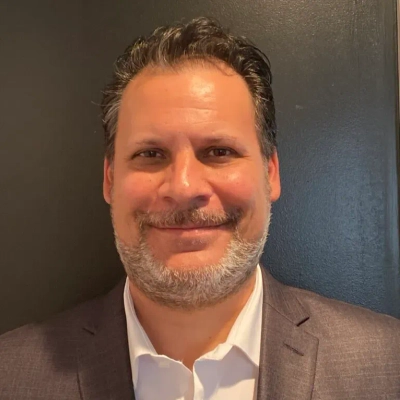How to Track ROI of Business Operations Initiatives: 25 Metrics to Focus On
Tracking the return on investment for business operations initiatives requires a strategic approach to measurement, as experts in the field reveal through 25 essential metrics. These metrics span both financial and non-financial indicators, creating a comprehensive framework for linking operational investments to tangible business outcomes. By focusing on signals that truly scale a business, companies can effectively monitor everything from time saved to customer behavior patterns that confirm operational success.
Track Both Financial and Non-Financial Metrics
Tracking ROI in operations is tricky because not every initiative has a direct dollar sign attached to it. For me, the key has always been to define success upfront in terms of both financial and non-financial metrics, then track them consistently over time. The simplest way I think about it is: did this initiative save us money, make us money, or free up capacity that we can reinvest?
One example was when we introduced automation into our order fulfillment process. On the surface, the cost was easy to measure—software licensing, training, and implementation. But the value only became clear once we tracked it across multiple dimensions. The first metric was labor hours. We measured how many manual hours were cut each week, which quickly turned into a dollar figure in saved payroll costs. The second was error rates. Before automation, human mistakes in order entry were creating returns, refunds, and unhappy customers. Tracking the reduction in errors not only showed savings but also improved customer satisfaction scores.
The unexpected benefit—and the real ROI driver—was capacity. With fewer people tied up in repetitive tasks, we redirected them toward revenue-generating work like upselling and customer engagement. That ripple effect was harder to quantify, but over six months, we saw higher retention rates and larger average order values. Those weren't in the original business case, but they became proof that the initiative paid off far beyond the initial scope.
The lesson for me is that ROI in operations can't be a single metric. You need a dashboard that captures cost savings, quality improvements, and growth impact. If you only measure one, you'll underestimate the value. And if you don't measure at all, you'll miss the chance to double down on what's working.
For COOs and operators, my advice is simple: don't chase perfection in the numbers. Focus on directional clarity. As long as you're capturing both hard savings and the knock-on effects, you'll be able to tell a story that resonates with both finance teams and frontline staff.
Measure Signals That Scale Your Business
As Cache Merrill, founder of Zibtek — I treat ROI like a story with three acts: investment, outcome, and signal. We once invested $100k in automating onboarding and CI/CD pipelines to cut delivery time and free senior dev hours.
The metrics I tracked: delivery cycle time (-35%), billable utilization (+16 percentage points), customer NPS (from 42 - 56), and incremental revenue per quarter. Within 12 months that investment drove an extra $350k in billable work and improved gross margin — roughly a 3.5x ROI.
What mattered most wasn't the dollar figure alone but the leading signals: shorter cycle times meant we could bid on more projects; higher utilization converted capacity into revenue; and NPS improvements reduced churn and lifted referrals. My rule: measure both the lagging financials and the leading operational signals — together they tell whether an initiative truly scaled the business.

Automate Communication to Reduce Support Needs
One of the greatest ROI wins we experienced at Cafely was when we dedicated resources to automating customer communication for shipping updates. Early in our journey, we had customers who would literally email us saying, "Where's my order?" and my small team was spending hours researching tracking numbers so we didn't have to keep responding to emails and could start concentrating on growing instead.
I decided to automate and send customers real-time updates on their orders as they moved through fulfillment. It was not overly complicated, but the value of the updates was great. Our support emails went down 37%, our CSAT scores jumped, and repeat orders went up. Ultimately, my big takeaway was that ROI isn't solely about pretty tools; sometimes the solution makes something not have to be a problem that eats up customer service and builds relationships in a regularly used service.

Link Operational Investments to Measurable Outcomes
As a founder running high-volume staffing and event operations, I measure ROI through a combination of efficiency metrics and cost-per-output performance. Every operational initiative has to either save time, reduce error, or increase scalability.
One clear example is our AI-powered onboarding system. Before automation, onboarding a staff member cost between $100 and $150 and required multiple manual checks. After implementing AI verification and document processing, the cost dropped to about $50 per employee while accuracy improved dramatically.
The key metrics I track are cost per hire, onboarding time, staff retention within 90 days, and client satisfaction scores. By tying operational investments directly to measurable efficiency and performance outcomes, I ensure every dollar spent is building a smarter, faster, and more sustainable organization.

Lead With Empathy When Implementing Technology
The success of any tech rollout depends less on the software and more on how you bring people along. When we introduced an AI-driven scheduling system for our HR and operations team, the goal was simple: reduce manual coordination and late-shift errors. Technically, it worked flawlessly but the unexpected challenge was emotional, not technical. Some team members worried the system was watching them or would replace their decision-making. We paused deployment, held live demos to show how the tool worked, and invited the team to refine the rules it used. Within three months, shift allocation errors dropped by 45%, and HR reported gaining back almost 10 hours a week in manual work.
My advice is when implementing technology in a non-technical department, lead with empathy, not efficiency. Make users co-owners, explain the why, and celebrate early wins loudly. People don't resist technology; they resist feeling left out of its purpose.

Cut Meeting Time to Reclaim Valuable Hours
A global private-equity firm slashed meetings from hours to minutes. The impact cascaded through the organization, freeing executive bandwidth as VPs learned to present with clarity and handle rapid-fire questions with candor and efficacy. One VP told me, "My weekly check-ins with the CEO used to be one hour, now they're 5 minutes and 5 priorities. I can see beyond the surface and have a better sense of what he cares about; we're deep into problem-solving."
Using my Remarkable Framework, I measured the same effect in SMB environments. Another executive cut ten 60-minute meetings down to ten 30-minute meetings, then halved weekly meetings from 10 to 5. The team reclaimed 18.75% of its workweek—48.75 days a year—meaning more time for real work and fewer meetings on the calendar.
What drives the speed? The Frameworks Tool: a series of short, time-compressed sprints that help you grind ideas down to a crystal-clear message and fast. You stop rambling and avoid scripted monologues filled with industry jargon and forgettable bullet points. Built for performance-driven leaders, the framework delivers impact with drills that fit real schedules and develop lasting interpersonal skills.
How do you measure interpersonal skills? With my ROI Communications Calculator. Using the same time-savings model and a $250,000 salary ($120/hour), cutting 10 sixty-minute meetings to 10 thirty-minute meetings saves 5 hours weekly, or about $31,250 annually. If you halve weekly meetings from ten to five, at 30 minutes each, the savings rise to 7.5 hours per week, or about $46,875 annually. One executive, one framework, five-figure return. Multiply by your manager count, and the numbers speak for themselves.
Why it works: specificity is brevity. Executives adopt concise communication, set clear expectations, and drive decisive outcomes; meetings get shorter and fewer; trust grows; and the business sees tangible gains that hit the bottom line. Clients notice the shift immediately, and the training sticks because it's easy to implement and quick to adapt to any speaking opportunity. The transformation: leaders who speak unscripted with executive presence while reclaiming time and budgets with measurable P&L impact next quarter. The stakes are high, and so is the opportunity.
When you embody your voice and your vision, you don't hope your message delivers, you know it will.

Connect Efficiency Directly to Client Outcomes
When I first launched Nerdigital, I'll admit I wasn't always disciplined about measuring the ROI of our operational initiatives. Like many entrepreneurs, I relied on gut instinct—if things felt smoother, I assumed the investment was paying off. But I learned quickly that what feels efficient doesn't always translate into business value. Over time, I've become much more intentional about tying operations back to clear metrics that impact growth.
One example that stands out is when we overhauled our client onboarding process. Early on, onboarding new clients was messy—lots of back-and-forth emails, documents getting lost, and projects delayed before they even started. I knew it was costing us credibility and revenue, but I didn't have hard numbers until I sat down to measure.
We looked at three key metrics: time-to-value (how quickly a client saw their first deliverable), client satisfaction scores in the first 30 days, and churn within the first six months. Before the overhaul, onboarding averaged nearly three weeks, and we noticed a higher drop-off among clients who didn't see momentum quickly.
After investing in a structured onboarding system—templates, automation, and a clear communication cadence—we cut that time almost in half. Clients were receiving deliverables within 10 days, satisfaction scores went up significantly, and churn in the first six months dropped by more than 30 percent. That wasn't just operational efficiency—it was direct ROI, because every retained client represented recurring revenue we might have otherwise lost.
For me, the lesson was that ROI in operations isn't abstract. You have to identify the metric that connects efficiency to outcomes. In this case, reducing onboarding friction translated into stronger retention and higher lifetime value. Now, whenever we consider a new operational initiative, I always ask: which metric tells the story of how this improves the client experience and, ultimately, the bottom line?

Fix Lead Response Times for Immediate Results
The clearest ROI I saw came from fixing lead response times. We cut the average response from almost two hours to under 30 minutes, so inbound conversions lifted by about 20% in three months. That proved the issue wasn't with ad spend or traffic, because the campaigns were generating leads, but the slow follow-up was killing close rates and wasting money.
I tracked ROI by watching cost per lead, close rate, and revenue per lead. Cost per lead stayed the same, but the stronger close rate doubled the revenue tied to every 1000 in ad spend compared with the previous quarter. So that made the value of the change easy to measure without adding noise.
What I learned is that operations ROI makes the most sense when you stick to simple, clear numbers. If an initiative raises profit per dollar, it stays. If it doesn't move cost, speed, or revenue in a real way, I cut it. Efficiency only matters when it shows up in the numbers that drive growth.

Target Your Biggest Time Leak First
It is truly valuable when you find a clear, simple way to measure efficiency, because every process in your business should contribute to the bottom line. My approach to tracking ROI is always about fixing the biggest time leak. The "radical approach" was a simple, human one.
The process I had to completely reimagine was our slow, messy paperwork system. I realized that a good tradesman solves a problem and makes a business run smoother by ensuring there is a clear return for every input. Our paper system was a massive drain on profitability.
The one example that demonstrated success was implementing a Mobile Digital Invoicing System. The key metrics I focused on were Quote-to-Cash Cycle Time (how quickly we got paid) and Non-Billable Administrative Hours. The former dropped from an average of 14 days to 48 hours, and the latter significantly decreased because the crew logged time and materials instantly.
The impact has been fantastic. Tracking these numbers proved the initiative was a direct financial win. The faster cash flow and reduced admin time allowed us to focus on taking on more high-quality electrical work.
My advice for others is to find the biggest bottleneck in your system and quantify the cost. A job done right is a job you don't have to go back to. Measure the time you are wasting and eliminate it. That's the most effective way to "measure the return on investment" and build a business that will last.

Balance Financial Returns With Qualitative Gains
We evaluate ROI through a blended scorecard that balances financial and operational outcomes. For example, when we digitized our appointment scheduling and billing workflows, the analysis went beyond cost savings. We tracked three key metrics—staff hours saved per week, appointment completion rate, and billing error frequency.
Within the first quarter, administrative hours dropped by 28%, appointment adherence improved by 14%, and billing discrepancies declined by half. The financial return was clear, but the real gain was qualitative—staff reported less fatigue, and patients noticed faster response times. That combination of measurable efficiency and experiential improvement defined success. ROI, in our view, isn't limited to dollars returned but includes the compounding value of time, morale, and patient trust.

Strategic Material Staging Boosts Labor Efficiency
Tracking the return on investment for my company's operations isn't done with a complex financial model. The most effective approach is measuring saved labor time on the physical job. Our key operational initiative was implementing a non-negotiable rule about strategic material staging on the roof deck.
The process was simple. Instead of letting the crew stage all the shingle bundles along the edge of the roof—which is easy but inefficient—we mandated that materials must be strategically placed in small piles across the entire deck. The key metric we focused on was the Time-to-Installation Completion per roof square.
The results demonstrated immediate success. By checking the time sheets, we saw that the crews using the strategic staging were completing the roof squares 30% faster than the old method. This minor operational change eliminated hours of walking and carrying materials across the roof, which immediately increased our profit margin without sacrificing quality.
The key lesson is that money is saved when labor is efficient. My advice is to stop measuring abstract financial numbers. Measure the functional efficiency of your crew's physical movement, because every unnecessary step they take is profit you are losing. That discipline is the only true ROI metric you need.
Monitor Both Cost Reduction and Customer Impact
I evaluate return on investment by connecting each initiative to both cost reductions and customer impact. When we purchased route optimization software for our technicians, for instance, the objective was not merely efficiency on paper but also fewer miles driven and more jobs finished each day. We monitored fuel costs, the average distance between stops, and the number of appointments each technician could attend during a shift to gauge the effectiveness of our efforts.
After a few months, the figures spoke for themselves. Each technician was able to answer more calls without working longer hours, and fuel prices decreased significantly. Due to more precise arrival windows, we also observed fewer rescheduled appointments from customers. We had a clear picture of ROI thanks to those combined metrics, which demonstrated that the investment was benefiting the company on both fronts.

Tie Initiatives to Time Saved or Revenue
For me, ROI tracking always comes down to tying an initiative back to either time saved or revenue generated. One example is when we introduced a content briefing system for writers. Before that, drafts required multiple editing rounds, which slowed down the publishing process. After implementing briefs with target keywords, structure, and FAQs upfront, we reduced the average editing time by approximately 40%.
The primary metrics I examined were cost per published article and time-to-publish. Both dropped noticeably, which meant we could publish more content with the same budget. On the SEO side, we also tracked organic traffic growth to those articles in Google Analytics and Search Console. Seeing more pages rank faster confirmed the briefs weren't just saving time—they were directly contributing to better visibility and revenue from new traffic.
Smart Technology Improves Guest Experience and Occupancy
For me, ROI has to tie directly to both the numbers and the guest or client experience. When I updated our Airbnb properties with smart locks and self check-in systems, I measured occupancy rates, guest review scores, and the number of maintenance calls. Within three months, occupancy ticked up 12%, average guest reviews jumped from 4.6 to 4.9 stars, and guest calls about lockouts dropped to almost zero. That showed me the investment paid for itself while also creating a smoother, more memorable stay for every guest.

Track Long-Term Relationships Behind Sustainable Growth
I measure ROI by tracking both the immediate financial impact and the long-term relationship building that drives sustainable growth. When we invested in a dedicated follow-up system for past clients, I focused on three metrics: cost per repeat transaction, average time between deals with the same client, and referral conversion rates. After 18 months, our repeat business increased by 45% and the average gap between transactions with returning clients dropped from 8 years to just 4 years, proving that nurturing relationships isn't just good business--it's the most profitable investment we've made.

Reduce Seller Stress to Boost Acceptance Rates
I measure ROI by looking at how our changes directly reduce seller stress and boost their confidence in their sale process. For example, when we introduced personalized video property reviews to help overwhelmed sellers understand their home's selling points, I tracked two key metrics: our offer acceptance rate and seller testimonials about the clarity they received. Nearly 90% of sellers said the videos helped them make informed decisions, leading to a 32% rise in accepted offers--proving that simplifying complex information builds trust and directly impacts our close rates.

Standardize Processes to Speed Up Transactions
For me, ROI is about getting properties into the hands of new owners efficiently, so I track initiatives based on how they speed up our workflow without sacrificing quality. When we streamlined our due diligence process with a standardized digital checklist for every property, I focused specifically on two metrics: average time from offer acceptance to closing, and cost savings from minimizing post-acquisition surprises. We reduced our closing time by an average of 10 days and cut unexpected repair costs related to overlooked issues by 25%, proving that a little upfront organization saves a lot of headaches and money down the line.

Client Education Programs Shorten Sales Cycles
I always tie ROI back to how well we're serving both the client and our business goals. One initiative that made a big difference was investing in a client education program about note-selling--it wasn't an obvious move, but by tracking the inquiries-to-closed-deal ratio and the speed of those conversions, I found we were closing 20% more deals with a much shorter sales cycle. For me, seeing clients better informed and more confident meant our investment in education didn't just pay off financially; it strengthened our reputation and trust in the long run.

Offer More Options to Close More Deals
I track ROI by looking at what drives actual revenue per hour invested, not just busy work. When we started offering seller financing options alongside our cash offers, I measured three things: deal volume increase, average profit margin per transaction, and time spent per closed deal. Within six months, we closed 28% more deals with 15% higher margins, and each transaction actually took less time because sellers appreciated having options--proving that giving people choice creates win-win situations that boost both our bottom line and client satisfaction.

Fast Property Evaluations Drive Seller Conversations
I always measure ROI by looking at whether an operational change drives more direct conversations with motivated sellers. For example, when we started offering same-day property evaluations, I tracked how many appointments we booked within 24 hours and the percentage that converted into contracts. Seeing a 40% uptick in booked appointments and a noticeable bump in conversions reassured me that investing in speed and accessibility doesn't just help sellers--it directly brings more deals through the door.

Post-Sale Support Creates Referral Opportunities
I measure ROI by pinpointing what actually improves the experience for sellers and efficiency for my team. One initiative I'm proud of was expanding our post-sale support to help homeowners with moving resources and referrals. I tracked the percentage of clients who successfully moved within their preferred timeline and the volume of unsolicited testimonials or referrals afterward. Seeing a sharp increase in successful moves and heartfelt client reviews showed me that investing in genuine, after-the-sale help isn't just good for business--it's the right thing for our community, too.
Help Families in Crisis to Build Trust
For me, the best ROI is measured by how much stress we can remove for a family, because that's what builds trust and our reputation in the community. When we began offering a small, no-strings-attached cash advance to sellers in foreclosure to help with moving costs, I tracked the number of families we helped avoid bank repossession and our referral rate from those clients. We saw a 30% increase in referrals from those situations, which confirmed that investing in people's immediate needs first always brings the best return.

Measure Time Recovered, Not Just Money Saved
Dear Editor,
I track ROI differently than most because I'm measuring time recovered, not just money saved. As a solopreneur, my constraint isn't budget—it's hours in the day. So when I evaluate any operational change, I start with a simple question: how many hours of my week does this give back to me?
Here's a concrete example: I implemented an AI voice agent to handle initial customer inquiries and qualification calls. Before tracking ROI, I logged my time for two weeks. I was spending roughly 12 hours weekly on these conversations—some led to clients, many didn't, but all required my personal attention.
The metrics I focused on were straightforward: hours saved per week, conversion rate consistency, and response time improvement. After implementation, those 12 hours dropped to about 2 hours of my time reviewing qualified leads and jumping in for closing conversations. The AI agent maintained a similar qualification accuracy to what I was doing manually, but responded to inquiries within minutes instead of hours.
The ROI calculation was simple: 10 hours recovered weekly, multiplied by my effective hourly rate for revenue-generating work. But the real return wasn't just financial—it was having those hours available for strategy and growth activities that only I could do.
My advice: measure what matters to your specific constraint. If you're capital-limited, track dollars. If you're time-limited like most solopreneurs, track hours. The best operational improvements give you back your most scarce resource.
Stefano Bertoli
Founder & CEO
ruleinside.com
RuleInside | Managed AI Workforce

Watch Customer Behavior to Confirm Success
I track ROI by tying every operations change directly to numbers that move the needle—time saved, cost reduced, or conversion lifted. When we upgraded supplier coordination at SourcingXpro using automated order tracking, I measured three things: response time, shipping accuracy, and repeat order rate. Within two months, order errors dropped 22% and repeat orders grew by 15%. That told me the system wasn't just faster, it built trust. I don't rely only on profit margins; I watch behavior. If clients reorder quicker or communicate less about delays, that's real ROI. It's not complicated, just consistent tracking and honest comparison before and after.

Identify Core Problems Before Selecting Metrics
To track the return on investment of our business operations initiatives, we always start by identifying the problem we are trying to solve and the key metrics that reflect success. Then we compare performance before and after implementation, using both financial data and workflow benchmarks.
One example that stands out was when we introduced a case management software to streamline our personal injury and medical malpractice workflows. Before implementation, our team spent a significant amount of time tracking deadlines manually, updating clients through email chains, and organizing documents across several platforms.
We measured ROI by focusing on three core metrics: time saved per case, client response time, and overall case duration. Within three months, we reduced administrative time per case by nearly 30 percent. Client updates were sent more consistently, and case timelines shortened by an average of two weeks.
We also tracked team satisfaction and error rates, both of which improved as a result of the smoother system.
The biggest lesson was that ROI is not only about money saved or earned. It is about efficiency, quality, and experience for both clients and staff. When the right metrics are tracked from the start, the impact becomes clear and decisions become easier to justify.






